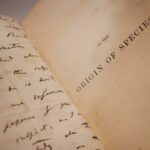Charles Darwin, a name synonymous with the theory of evolution, has left an indelible mark on the field of biology. His revolutionary ideas not only challenged the prevailing beliefs of his time but also laid the foundation for our modern understanding of life’s diversity. The cornerstone of Darwin’s theories is the concept of natural selection, a process that drives the evolution of species and shapes the vast array of life forms we see today.
Understanding Darwin’s Greatest Theory: Natural Selection
At its core, natural selection is a simple yet powerful mechanism. It is the process by which individuals with certain heritable traits are more likely to survive and reproduce than others. Over generations, these advantageous traits become more common in the population, leading to evolutionary change.
The theory of natural selection rests on four tenets: variation, heredity, differential survival and reproduction, and gradual change over time. Each of these tenets plays a crucial role in the process of natural selection, and together, they provide a comprehensive explanation for the evolution of species.
The Process of Natural Selection
Variation: The Basis of Natural Selection
Variation is the raw material upon which natural selection acts. Without variation, there would be no differences for natural selection to favor. This variation can arise from mutations, gene flow, or sexual reproduction, leading to a diverse array of traits within a population.
Heredity: The Transmission of Traits
Heredity is the process by which traits are passed from parents to offspring. Those individuals with traits that enhance survival and reproduction are more likely to pass these advantageous traits to their offspring. Over time, these traits become more prevalent in the population.
Differential Survival and Reproduction
Not all individuals in a population will survive to reproduce. Those with traits that enhance survival and reproduction—often referred to as “fitness”—are more likely to pass on their genes to the next generation. This differential survival and reproduction is the engine that drives natural selection.
Gradual Change Over Time
The process of natural selection results in gradual change over time, often referred to as “descent with modification.” Over many generations, small changes can accumulate, leading to the evolution of new species.
Natural Selection and the “Design” of Organisms
Natural selection plays a pivotal role in shaping the “design” of organisms. It is a process of trial and error, where beneficial traits are “selected for” and detrimental traits are “selected against.” Over time, this process can lead to organisms that are well-adapted to their environments.
Several case studies highlight the power of natural selection in shaping organism design. For instance, the long neck of the giraffe, which allows it to reach leaves high in trees, or the sharp claws of a predator, which enable it to catch its prey, are both examples of adaptations shaped by natural selection.
Natural Selection and Biological Diversity
Natural selection is a key driver of biological diversity. By favoring certain traits over others, natural selection can lead to the evolution of new species, contributing to the vast array of life forms we see today.
The diversity of finches on the Galapagos Islands, famously studied by Darwin himself, is a prime example of this process. Each species of finch has a beak shape that is well-adapted to its specific diet, demonstrating how natural selection can lead to diversification.
Darwin’s Theory of Natural Selection versus Other Theories
Darwin’s theory of natural selection provides a more robust and comprehensive explanation for the evolution of species than other theories, such as Lamarck’s theory of evolution or the concept of intelligent design.
Lamarck proposed that organisms could change during their lifetimes in response to their environment, and then pass these changes on to their offspring. However, this theory lacks the genetic basis that underpins Darwin’s theory of natural selection.
Intelligent design, on the other hand, posits that certain features of the universe and living things are best explained by an intelligent cause, not an undirected process like natural selection. However, this theory lacks empirical support and is not widely accepted in the scientific community.
The Legacy of Darwin’s Theory of Natural Selection
Darwin’s theory of natural selection has had a profound impact on modern biology. It provides a unifying framework for understanding the diversity of life on Earth, and continues to guide research in fields ranging from ecology to genetics.
Despite being over 150 years old, the theory of natural selection remains as relevant today as it was in Darwin’s time. It continues to shape our understanding of life’s complexity and diversity, demonstrating its enduring significance.
Criticisms and Controversies Surrounding Darwin’s Theory
Like any scientific theory, Darwin’s theory of natural selection has faced its share of criticisms and controversies. Historically, these criticisms often stemmed from religious or philosophical objections to the idea of evolution.
In modern times, controversies often arise from misunderstandings about the nature of natural selection and evolution. For instance, some people mistakenly believe that evolution is a linear process, with species progressively improving over time. However, this is not the case—evolution is a branching process, with species adapting to their specific environments, not progressing towards an “ideal” form.
Conclusion
In conclusion, Darwin’s theory of natural selection provides a powerful explanation for the diversity and complexity of life on Earth. Despite the criticisms and controversies it has faced, it remains a cornerstone of modern biology, guiding our understanding of the natural world.
Frequently Asked Questions
What is natural selection?
Natural selection is the process by which individuals with certain heritable traits are more likely to survive and reproduce than others. Over generations, these advantageous traits become more common in the population, leading to evolutionary change.
What are the four tenets of natural selection?
The four tenets of natural selection are variation, heredity, differential survival and reproduction, and gradual change over time.
How does natural selection lead to the evolution of new species?
Natural selection can lead to the evolution of new species by favoring certain traits over others. Over time, populations with different sets of advantageous traits can diverge, leading to the formation of new species.
How does natural selection shape the “design” of organisms?
Natural selection shapes the “design” of organisms by favoring beneficial traits and selecting against detrimental ones. Over time, this process can lead to organisms that are well-adapted to their environments.
How does Darwin’s theory of natural selection compare to other theories of evolution?
Darwin’s theory of natural selection provides a more robust and comprehensive explanation for the evolution of species than other theories, such as Lamarck’s theory of evolution or the concept of intelligent design.
What are some common misconceptions about natural selection and evolution?
Some common misconceptions about natural selection and evolution include the belief that evolution is a linear process, with species progressively improving over time, and the idea that individuals can evolve during their lifetimes in response to their environment.
References:
- Darwin, C. (1859). On the Origin of Species by Means of Natural Selection, or the Preservation of Favoured Races in the Struggle for Life. London: John Murray.
- Mayr, E. (2001). What Evolution Is. New York: Basic Books.
- Futuyma, D. J. (2013). Evolution. Sunderland, MSinauer Associates.
- Ridley, M. (2004). Evolution. Oxford: Blackwell Science Ltd.








